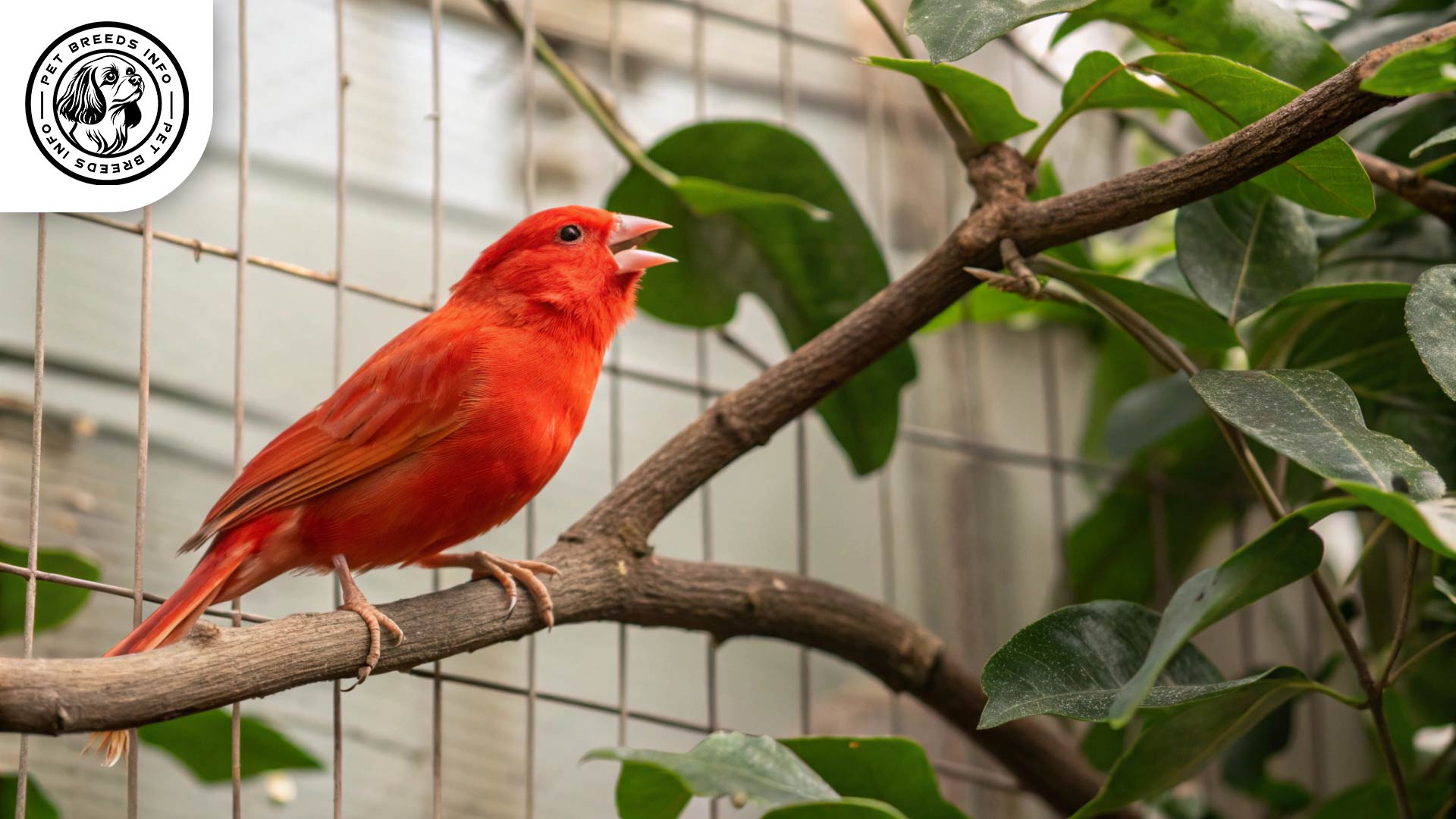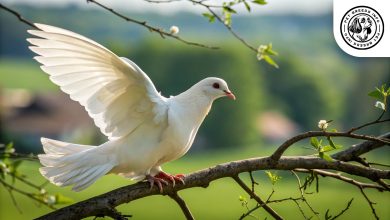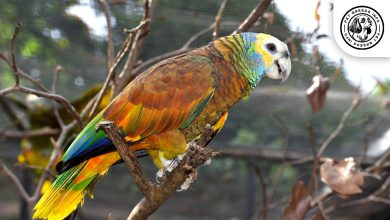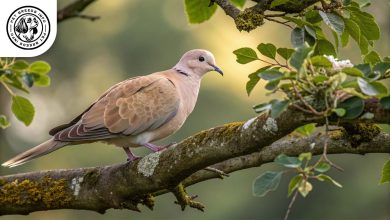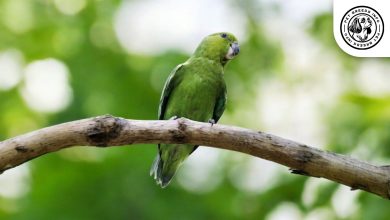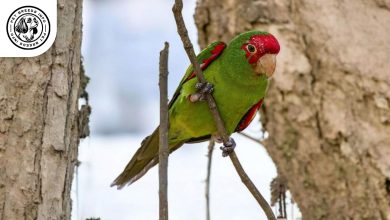Red Canary Bird: Personality, Lifespan, Food & Care
General Introduction of the Breed
The Red Canary, known as “Canario Rojo” in Spanish, is a domesticated songbird prized for its vivid red plumage and melodious singing. This breed is a result of selective breeding between the common yellow canary and the Red Siskin, a small red bird native to South America. The Red Canary was first developed in the early 20th century by breeders looking to enhance the striking coloration of traditional canaries.
Table of Contents
| Common Name | Red Canary |
| Scientific Name | Not explicitly mentioned in the text. |
| Origin | Developed through selective breeding (common yellow canary x Red Siskin from South America). |
| Size | Approximately 5.5 inches (14 cm) in length, weighing between 12 to 29 grams. |
| Lifespan | Around 10 to 12 years with good care. |
| Talking Ability | Not mentioned; primarily known for singing. |
| Colors | Vibrant red or orange-red plumage, with variations in hue depending on genetics and diet. |
| Noise Level | Melodious and pleasant song. |
| Social Behavior | Social with other canaries but may not get along well with aggressive or territorial bird species. |
Physical Characteristics
The Red Canary is a small bird, typically measuring around 5.5 inches (14 cm) in length and weighing between 12 to 29 grams.
Its most distinctive feature is its vibrant red or orange-red plumage, which varies depending on genetics and diet. Some may have more orange or deep crimson hues.
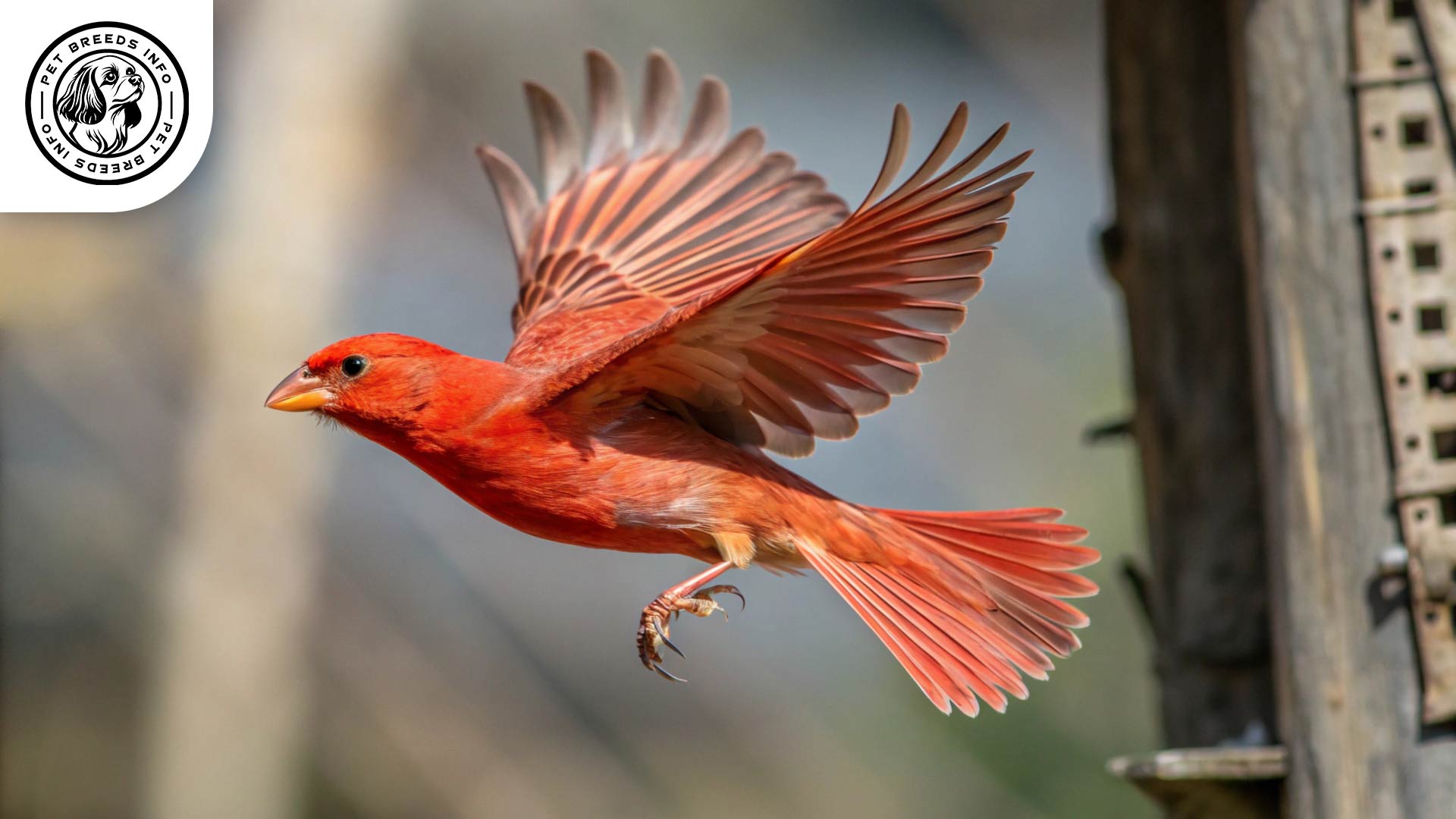
Red Canaries have round, dark eyes that give them an alert and lively expression.
Their beak is short and pointed, usually a pale ivory color. Their tails are slender and slightly forked, while their wings are well-proportioned for their small size.
Read More: Call Duck
Personality and Temperament
Red Canaries are known for their cheerful and friendly nature. They have a melodious, pleasant song, making them popular among bird enthusiasts.
They are intelligent birds but do not require complex training. Instead, they thrive on routine and a calm environment.
These birds are relatively independent and do not crave human attention as much as parrots. However, with regular interaction, they can become comfortable around their owners.
Red Canaries are social with other canaries but may not get along well with aggressive or territorial bird species.
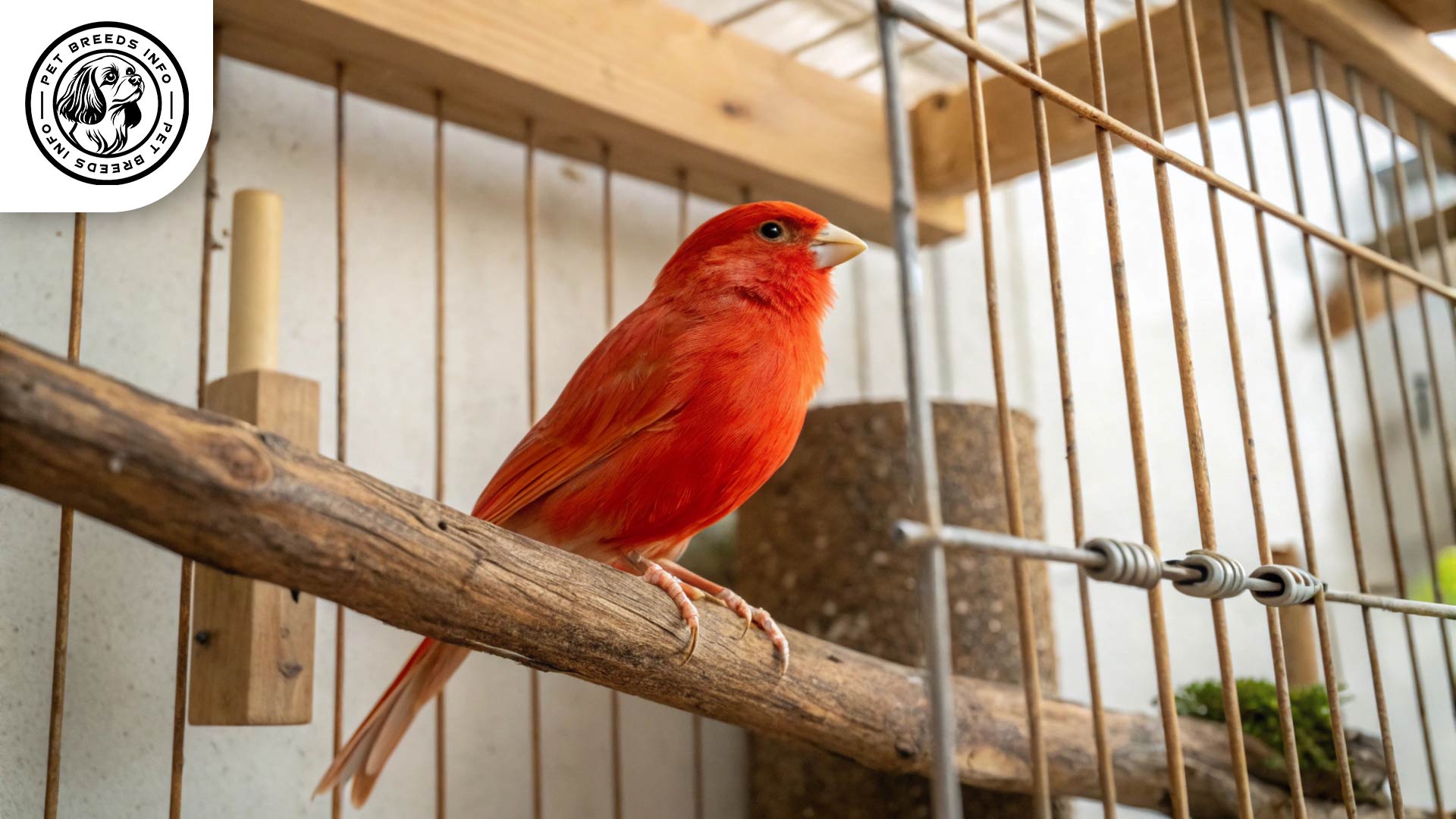
Care and Maintenance Requirements
Red Canaries are active birds and require a spacious cage equipped with perches and space to fly.
They thrive in a calm living environment and can adapt well to apartments or houses.
Minimal grooming is required as they preen their feathers regularly. However, providing a small dish for occasional baths helps them maintain clean plumage.
They are sensitive to extreme temperatures, so their environment should be neither too hot nor too cold. Exposure to direct sunlight for moderate periods is beneficial.
Routine cage cleaning, fresh food and water, and regular health checks ensure their well-being.
Diet and Nutrition
Red Canaries require a balanced diet consisting of high-quality canary seed mixes supplemented with fresh fruits and vegetables.
To maintain their red coloration, they need carotenoid-rich foods like carrots, red peppers, and specialized color-enhancing bird food.
Avoid feeding them chocolate, avocado, caffeine, and salty foods, as these can be toxic.
Provide small portion sizes and ensure access to fresh water daily.
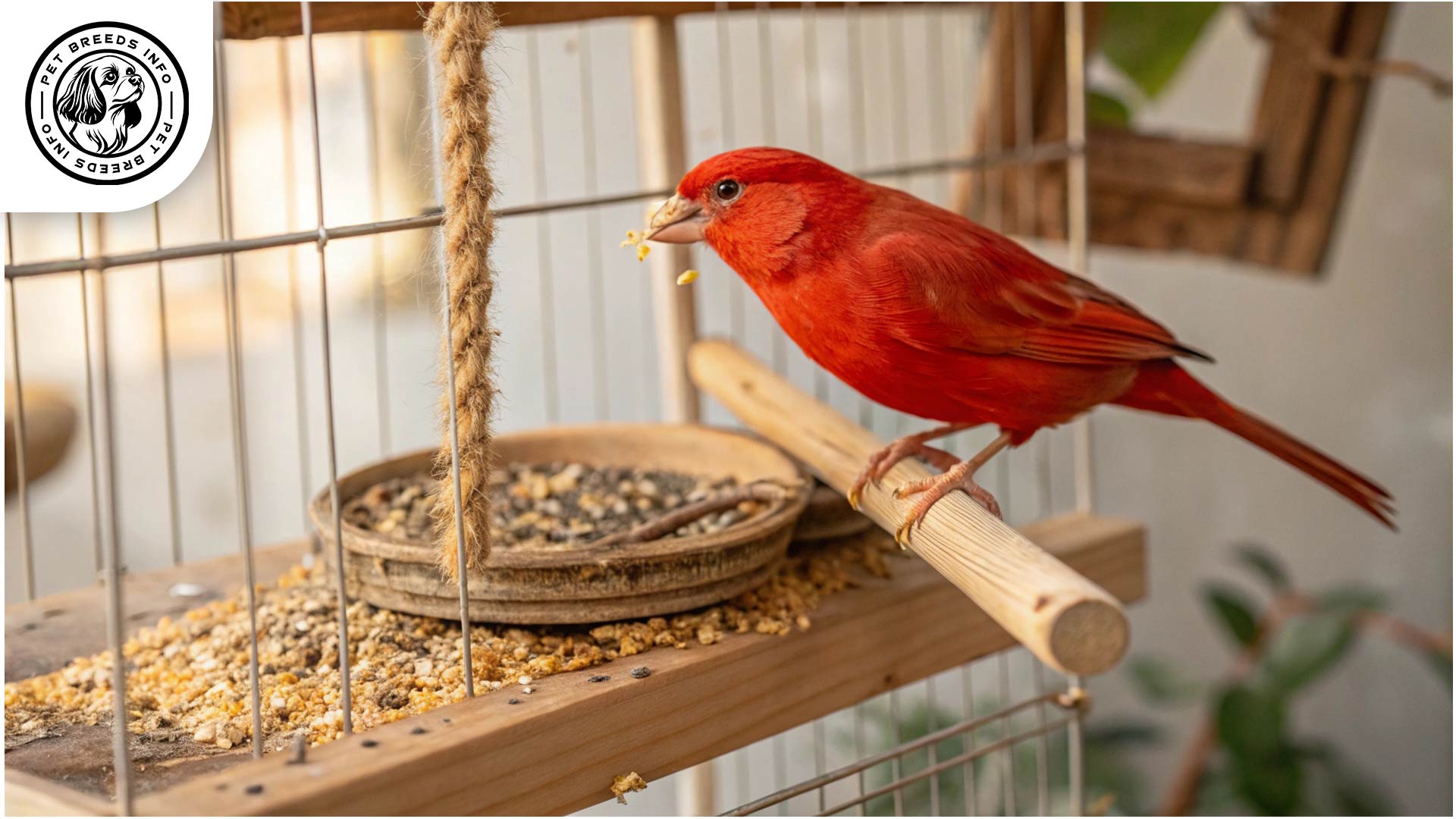
Health and Common Medical Issues
Common health concerns for Red Canaries include respiratory infections, mites, and nutritional deficiencies.
Proper diet and hygiene help in preventing most health problems.
The average lifespan of a Red Canary is around 10 to 12 years with good care.
Regular vet check-ups and routine vaccinations are recommended to ensure long-term health.
Read More: Cayuga Duck
Training and Behavior Management
Red Canaries do not require extensive training, but they can learn to recognize their owners and become comfortable with gentle handling.
Consistency and positive reinforcement help them associate their owners with safety and comfort.
Providing varied perches and toys inside their cages keeps them mentally stimulated.
Interaction with Other Animals and Humans
Red Canaries enjoy the company of other canaries but may not tolerate overly dominant birds.
They are well-suited for both individuals and families, but young children should be supervised to ensure gentle interaction.
They are not highly independent but also do not demand constant attention from their owners.
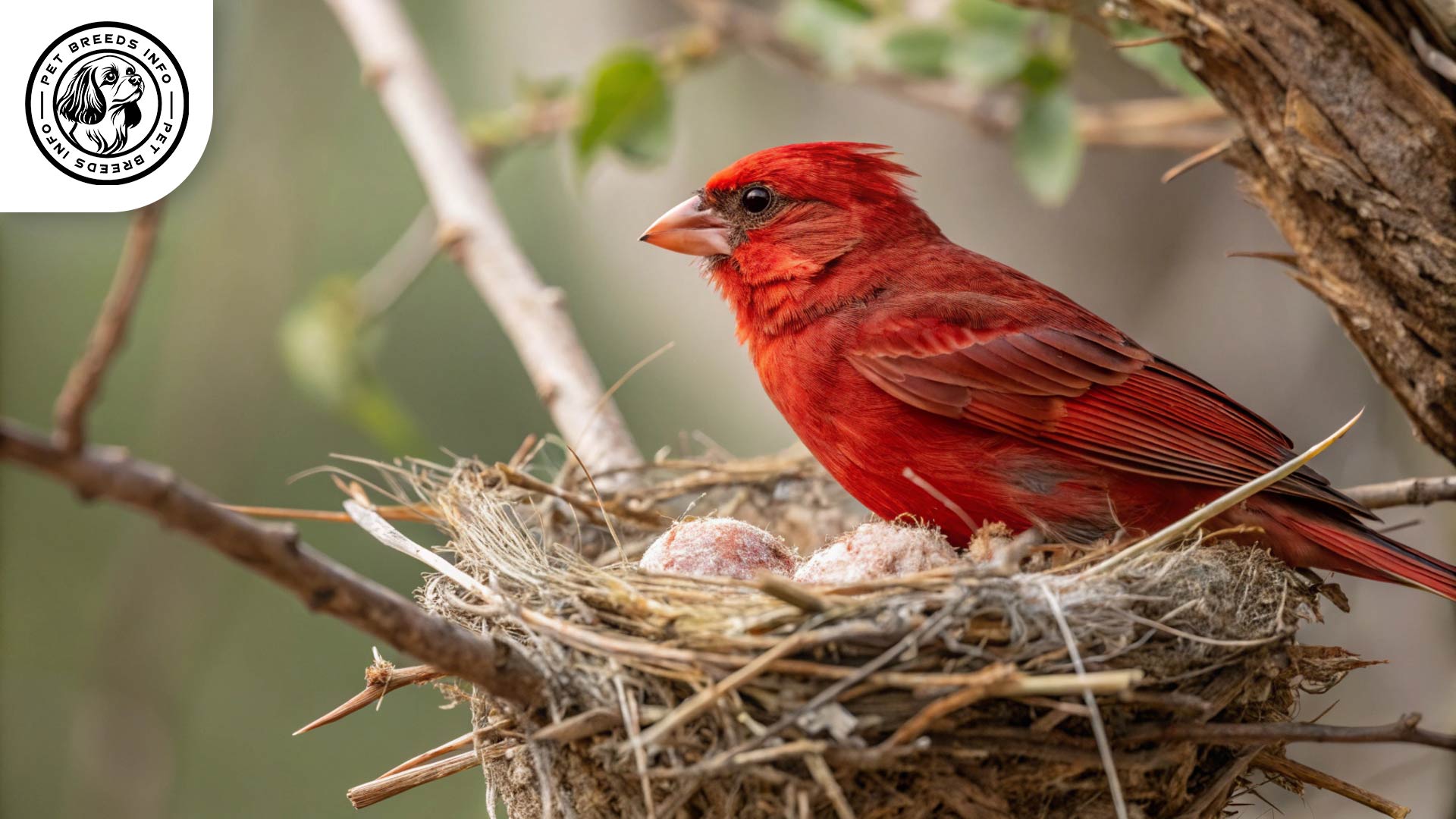
Price and Availability
The price of a Red Canary varies depending on its lineage and coloration, typically ranging from $60 to $150.
It is important to acquire them from reputable breeders or avian rescue organizations to ensure good health.
When purchasing a Red Canary, check for active behavior, clear eyes, and healthy feathers as indicators of good health.
Conclusion and Final Thoughts
The Red Canary is an excellent choice for pet owners who appreciate beautiful songbirds with minimal care requirements.
They thrive in a stable indoor environment and are ideal for apartment dwellers or homes with calm surroundings.
Potential owners should ensure they can provide a healthy diet and a spacious cage with regular interaction.
With proper care, the Red Canary will provide years of pleasant songs and companionship.
Read More: Embden Goose
FAQ
What is a Red Canary known for?
Red Canaries are prized for their vivid red plumage and melodious singing.
How big do Red Canaries get?
They are small birds, around 5.5 inches (14 cm) long.
What kind of environment do Red Canaries need?
They need a spacious cage, a calm environment, and moderate temperatures.
What do Red Canaries eat?
Their diet consists of high-quality canary seed mixes, fresh fruits, and vegetables, with carotenoid-rich foods to maintain their color.
Do Red Canaries talk?
The text does not mention them talking; they are known for their pleasant songs.
